
| Home |
Contents | Downloads | Resources |
Chapter 7: Railway Towns
Page 44: Boissevain
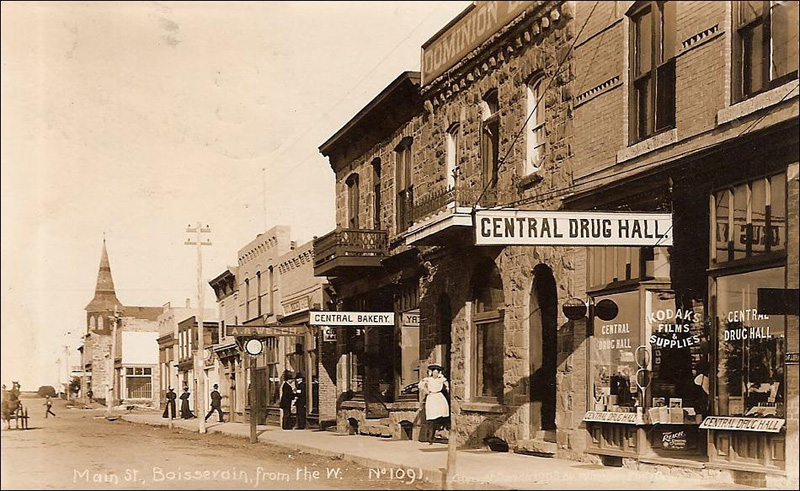
The railway line that now serves Boissevain was put into operation on January 3,1886. When the line approached the spot then known as Cherry Creek, the CPR announced that they would erect a station there and a town appeared almost overnight. Local businessman George Morton, quickly moved his general store from the earlier location of Wabeesh, in the Whitewater area, to the new town of Boissevain, where other buildings, stores and houses, were springing up. 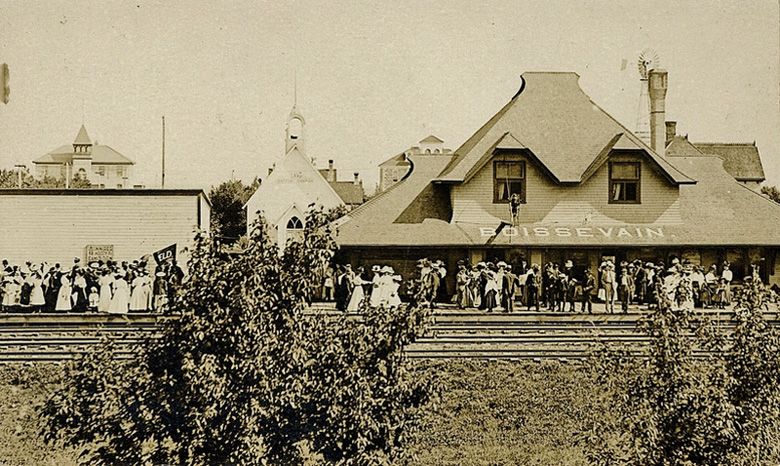 The Boissevain CPR Station
|
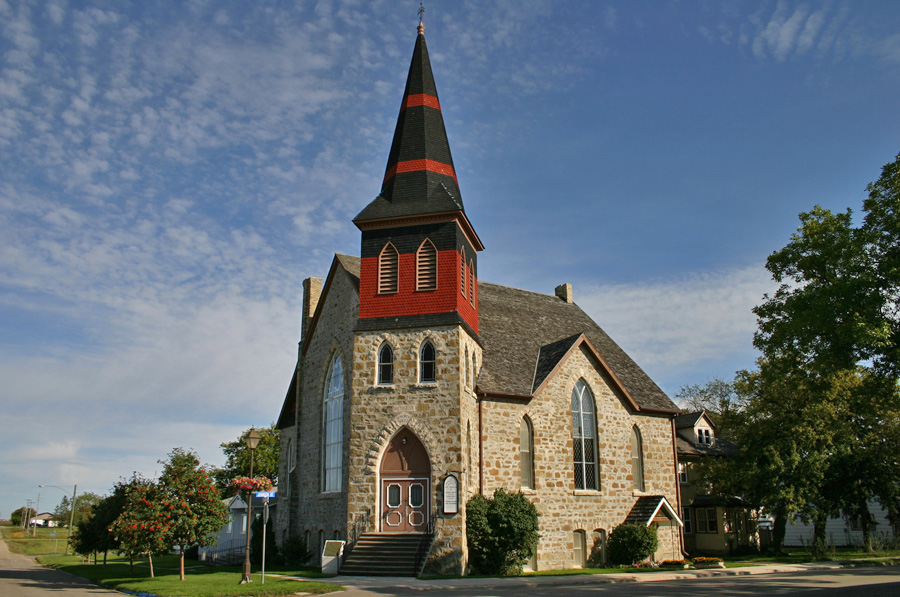
Within a few short years the new town of Boissevain grew into the town we would recognize today.
Three churches, St. Andrew’s Presbyterian (1887), St. Matthew’s Anglican (1889),
and St. Paul’s Methodist (1893) survive today.
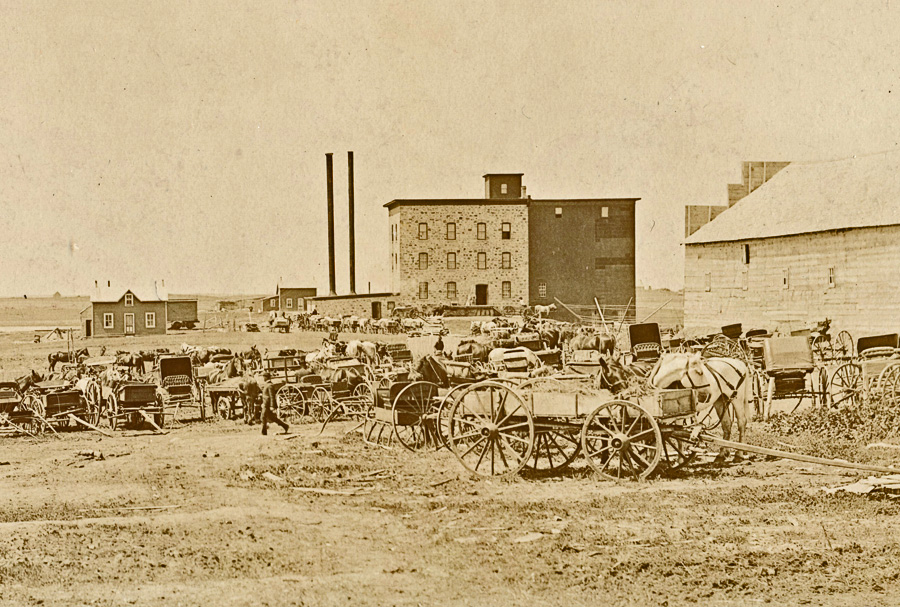
| Preston and McKay built a large Flour Mill
in 1889, which proved to be an important boost to the local
economy. In 1906 the Brandon, Saskatchewan and Hudson Bay Railway, which linked Brandon with the Great Northern Railway system in the United States provided competition for the CPR and additional service. The CPR also provided additional service when it completed its Boissevain-Lauder extension in 1913. |
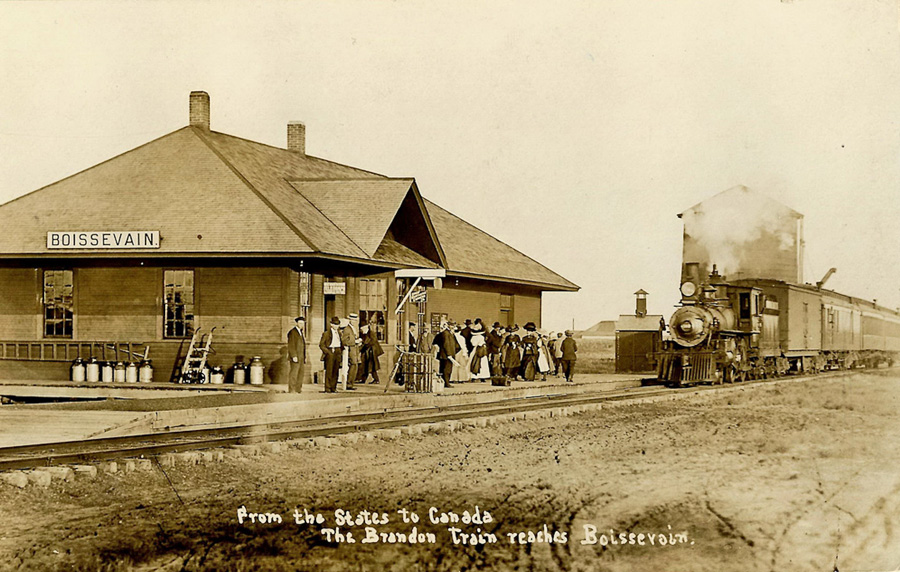
The Boissevain Great Northern Station
Boissevain Photo Collection
Page 45: Whitewater
| In 1886, the new CPR line bypassed the
established community of Waubeesh and created the new village of
Whitewater. The boxcar railroad station that had been established to service Waubeesh became the beginning of Whitewater village. Pioneer businessman George Morton built an elevator in 1888 along with a large general store and boarding house, using lumber cut by the Lake Max Sawmill. 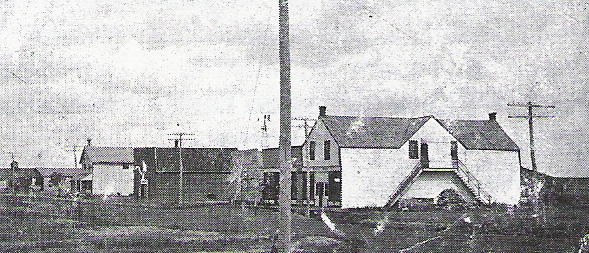 The elevator was the first of five that came to spring up in the town, making Whitewater a very important grain-handling centre. |
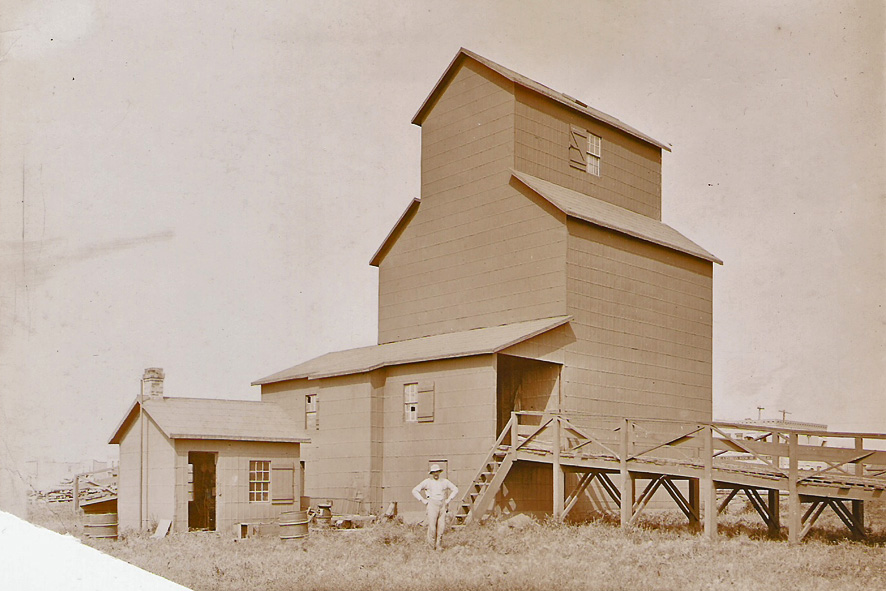
Until 1894, the children of
Whitewater attended Mountainside School,
which was about 7.5 km to the south. In 1894 a schoolroom was set up
above the general store in Whitewater. Petersburg School was built the
following spring at the south end of the community.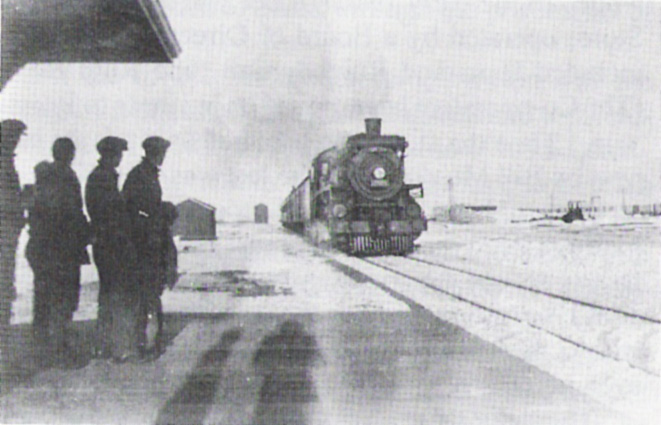 A brickyard started up in the late 1880s about a mile northeast of Whitewater which employed between 30 and 40 men. The bricks made from Whitewater Lake clay were of very high quality, and they were used for many buildings in the nearby town, including the Petersburg School. 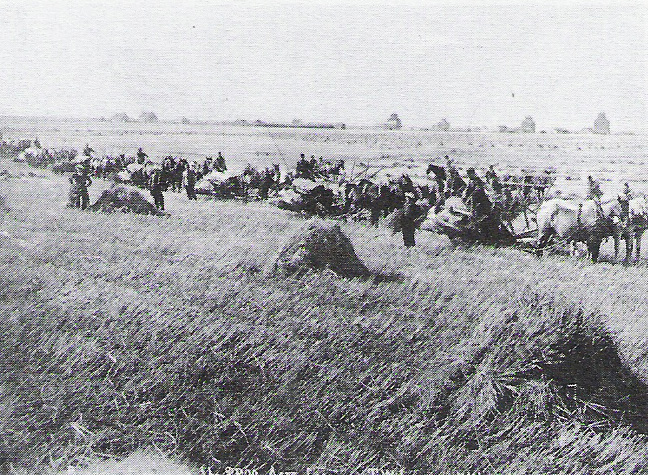 By the early 1900s the village had a butcher shop, harness-making shop, livery, carpenter, and draftsman. There was also an open-air skating rink complete with a warm-up shack. Rail service was provided regularly by the CPR, with daily passenger and mail traffic. |
Page 46: Deloraine
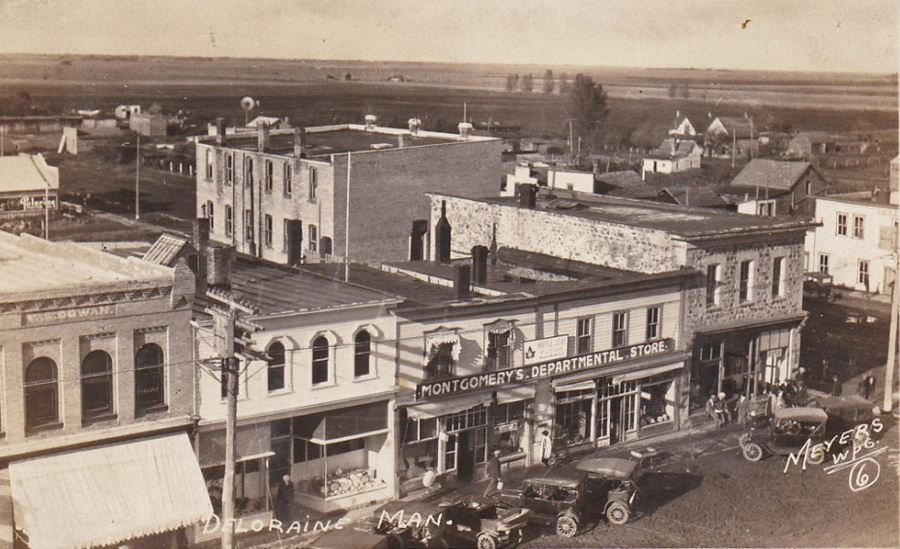
| When the first pioneers came and selected
homesteads and village sites
they considered several factors. Available wood and water and suitable
drainage were important. The railway companies were often more
interested in finding a good level route. Towns were located based on
the distance between stations. In 1885, the railroad reached Cherry Creek (Boissevain) and began the last stretch of the line. Instead of angling southwards towards the bustling community of Deloraine they headed almost straight west. The route across flat prairie was certainly easier to build than the path through the hills and valleys where Deloraine was located. So a “new” Deloraine was created. |
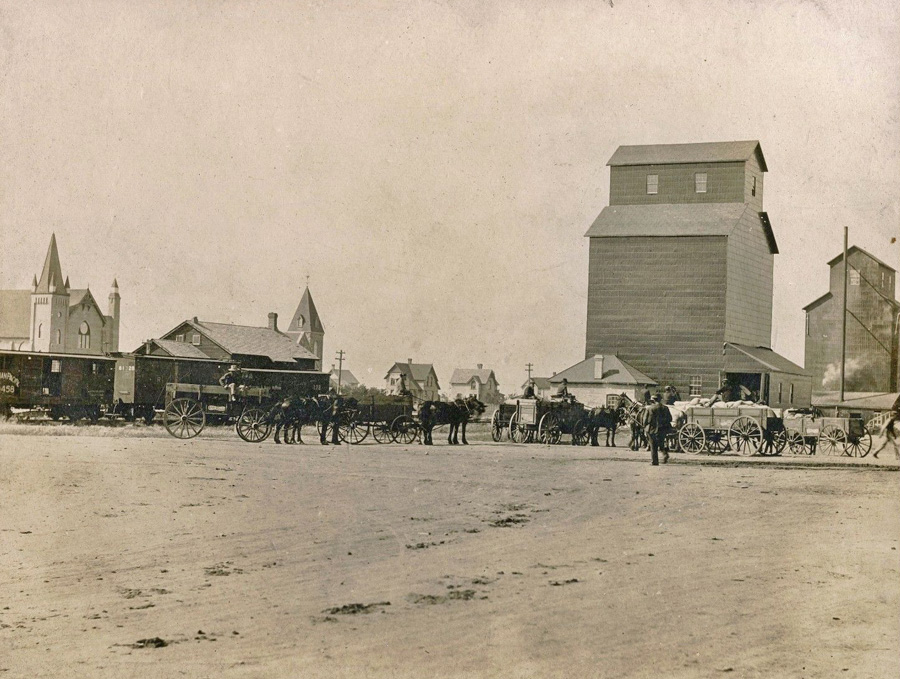
| Deloraine immediately replaced Boissevain
as the grain shipping centre
of the Southwestern plains, receiving wheat for the next four years
from as far as Pierson and Hartney. The sites that pioneers chose near water and trees where often quite scenic. But the railway often selected sites on a treeless prairie. In Deloraine it was Dr. Thornton, whose love of nature, and wide knowledge of horticulture, made him perfectly suited to the task of planting tress and creating parks. |
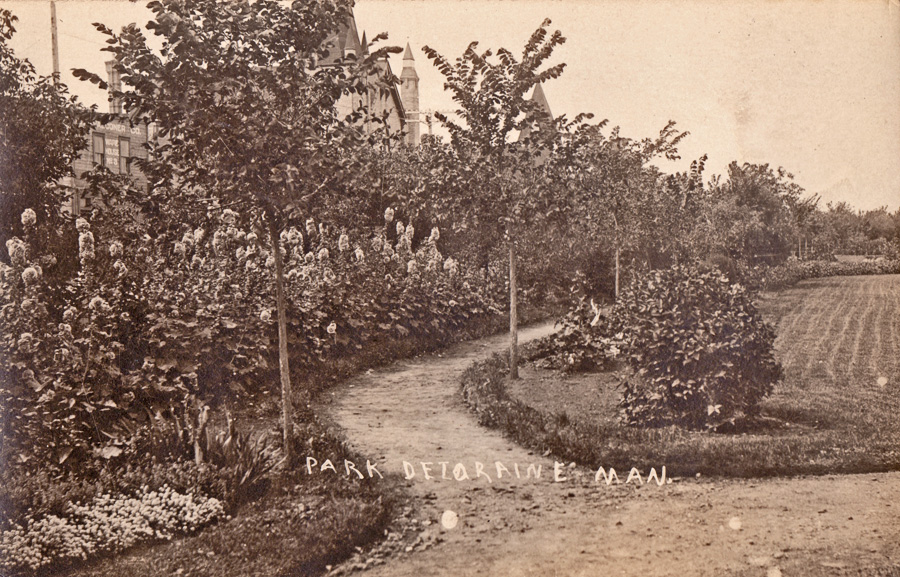
Deloraine Park – Designed by Dr. Thornton
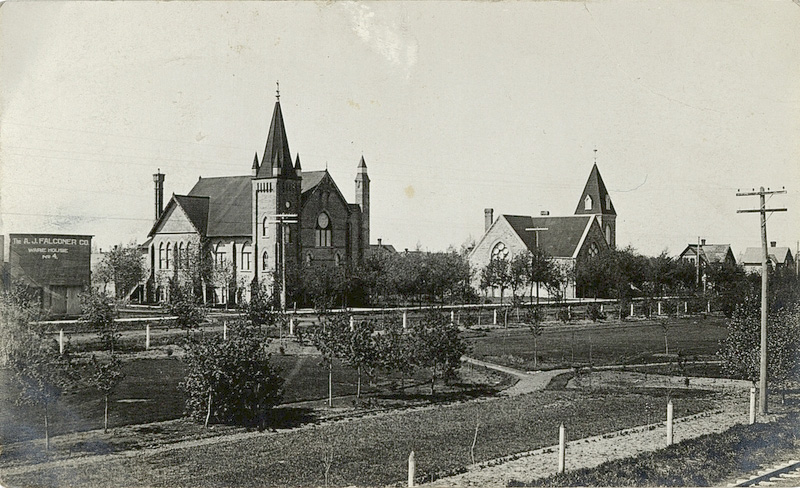 Both the Presbyterian and Methodist Congregations built fine large churches. However in 1917 they united their congregations and only need one building. Both were still standing in 2917 with the Presbyterian Church having served many other purposes. |
Page 47: Hartney
| The railway companies usually put towns
wherever they needed them. But
in 1889 local farmers heard that the CPR was going to build a town to
the northeast of where Hartney is today, settlers protested. They
insisted that the new town should be near where James Hartney had
established a post office and store on his farm. Mr. Hartney moved to the area in 1882 with his family. He imported a carload of Red Fife wheat from Minnesota and soon had a good wheat crop. This gave the district a reputation as a first-class wheat producing area. His success attracted more settlers and Hartney's farm became the centre of a new community. The post office, which he named after himself, and a store, were first operated out of his home. He brought men into the community to operate this business as well as a blacksmith shop that he later established. When the surveyors did appear they selected a spot within a mile of the Hartney farm and, the settlers, were happy. When the C.P.R named the town Airdrie they made another request. They wanted the new place named Hartney already in use for the post office. Once again, the CPR made the change. |
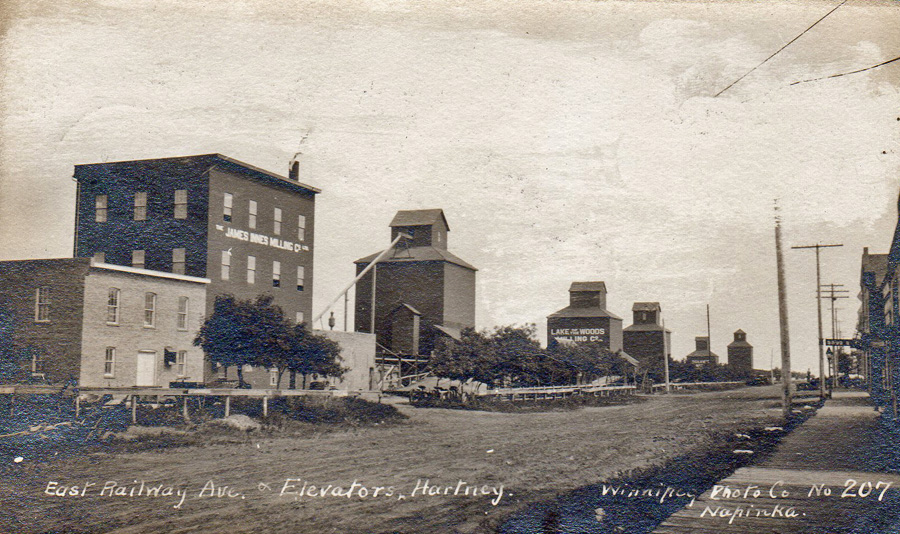
| Hartney grew quickly on each side of the
new railway track. The Mill and Elevators were important services. When the train whistle sounded for the first train on Christmas Day 1890, there were already two elevators, a boarding house, a store and post office. Dr. Frank McEown had set up a practice and started work on a drug store. As the town grew, two brickyards, a flour mill, and a sash & door factory contributed to the economy. In 1902 A.E. Hill built the two-story brick block that still stands on the corner of Poplar and East Railway. 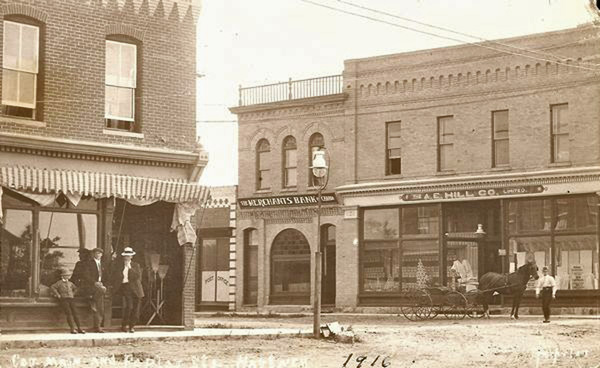 The A.E. Hill store. A second railway, the Canadian Northern connected Hartney to Virden to the west in 1900. By 1904, in addition to being the home of eight operating elevators and 10 clergy members, 51 businesses were listed in the town newspaper. |
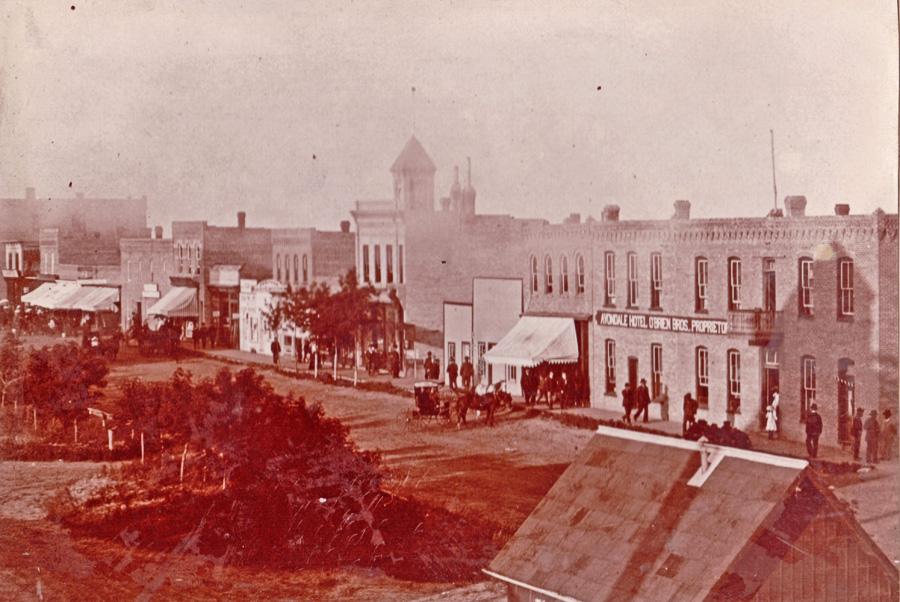
Grassland Heritage Website
Hartney Photo Collection
Page 48: Lauder
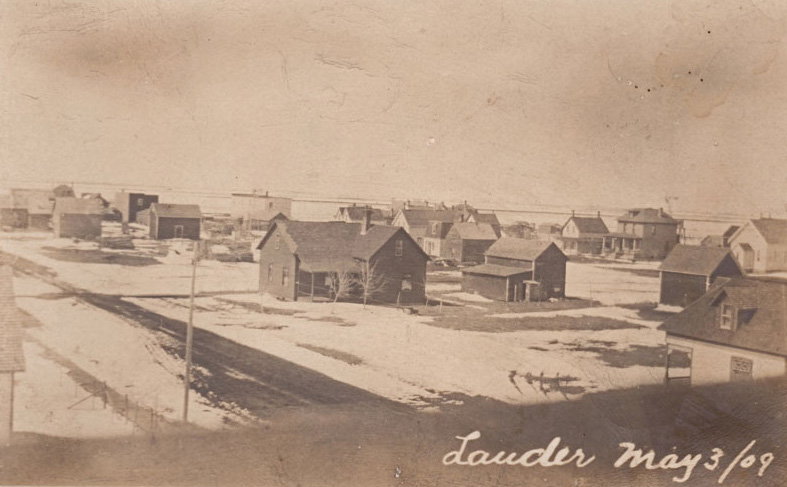
| Until the railway passed through Hartney
on a path to Melita, Melgund
was where residents in the Lauder area got their mail. It had a school
and church as well. With the railway came the new towns of Lauder and Napinka. As soon as town sites were laid out there were people on hand eager to set up places of business and Lauder was no exception. Before the end of 1892 there were numerous buildings and businesses. In 1893 records for the town show seven married couples, fifteen boys and ten girls, with ten children in school. 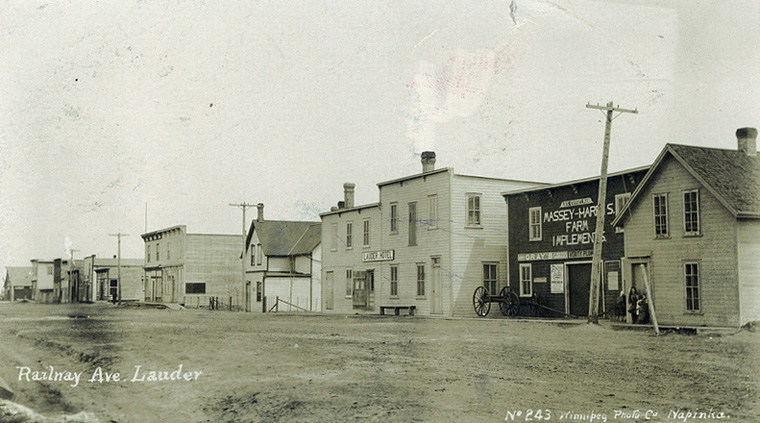 As was common in all too many of these new towns, there were setbacks. A fire in 1894 did a lot of damage. The residents didn’t waste any time – they rebuilt. By 1895 the town layout was firmly established. It had a rink and tennis courts, and its curlers and tennis players were well known in neighboring towns as were its baseball and hockey teams. There was a literary society and a bicycle club. Dances were held in Hamelin's hall. Another typical business venture in many new towns was the “Cheese Factory”. In 1895 the farmers of the area met to make plans. General approval was received and the factory was located just north of town. The rise in the road at this point was known for years as the "Cheese Factory Hill". The milk was gathered daily in large barrels and the whey returned to the farmers for feeding pigs. Henderson Directory 1897 lists W. Brigden as manager. It did not last too long - probably not more than year. 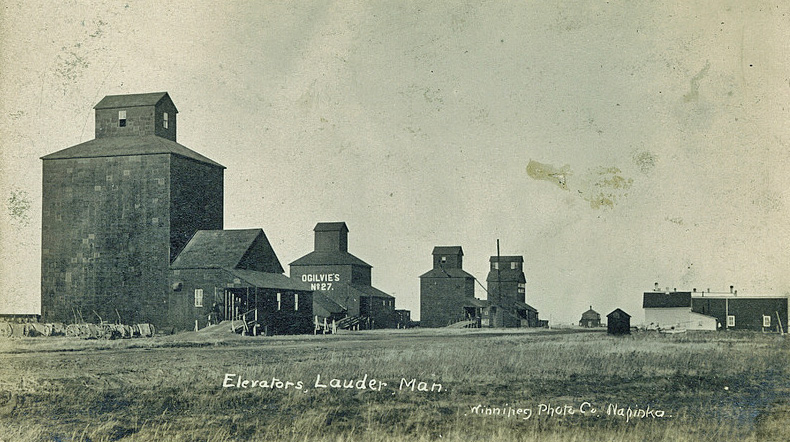 Other enterprises included a mill and a lime kiln just north of Grand Bend School. |
Lauder Photo Collection
Page 49: Napinka
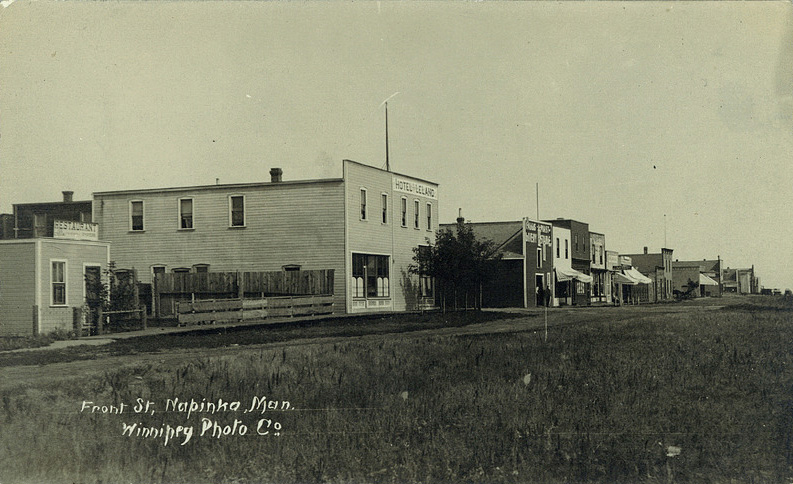
| In 1892 Napinka was a boom town located at
the junction of two busy CPR branch lines. The first building appeared in July of 1891 before the tracks were laid through the area, and before the townsite had even been surveyed. A year later after the first railway line (from Brandon to Pierson) created the town, the line from Deloraine was finished to Napinka. Nearby Melita, had sent a delegation to Winnipeg to argue for the junction to be placed in their town but Napinka won. Trains came in every day from Brandon, Winnipeg, Estevan and the many small towns along the line. To service the trains, the CRP built a water tower and pumped water from behind a dam the railway built on the Souris River. A coal dock, tool shop, roundhouse and bunkhouse were also built to serve the CPR. The passengers and crew on the trips that stopped overnight in Napinka used the hotels and stores built along Railway Avenue. In 1892, an article in the Brandon Sun mentioned Napinka having “…two general stores, three hardware stores, two butcher shops, one flour and feed store, one watchmaker, two dressmakers, builders, coal and wood dealers, one elevator, two lumber yards, a drug store and a barber shop…” It also had boarding houses, two hotels, two banks, a blacksmith, doctors, a Massey-Harris dealership, and eventually, with the arrival of the automobile, two garages. A beautiful two-story stone school now a designated Heritage Site, was built in 1900. 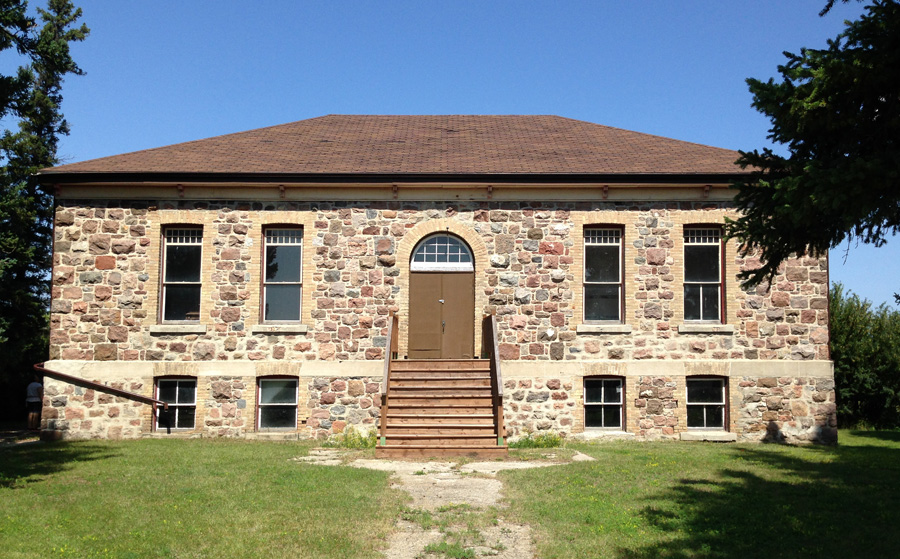 Sports teams, social clubs, and women’s organizations were set up. An open air skating and curling rink was built in 1896, while a newer curling facility was built in 1906, and curlers from Napinka achieved great success in bonspiels across Manitoba. |
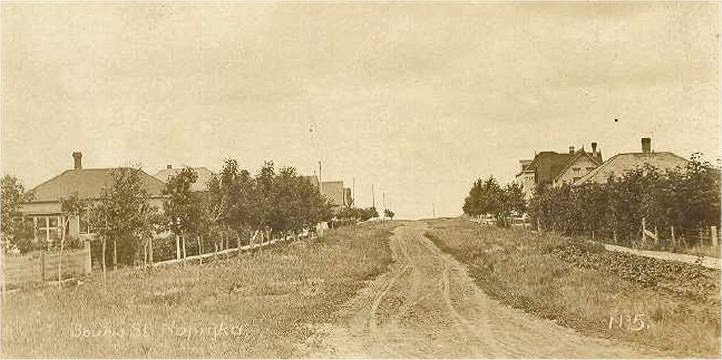
Napinka Photo Collection
Page 50: Melita
| By the time the current town of Melita
appeared in 1890, the region
itself had a long and interesting history. Three communities existed
within a few kilometres. Sourisford lives on as a location and a part
of our heritage. Dobbyn City never really got started, and the district
of Menota lives on as a school site. Manchester, renamed Melita, moved to be along a new rail line, and became the commercial centre of the region. Before the first train whistle sounded, Mr. G.L.Dodds had moved his Hardware & General Store to the site of the new town and everyone else followed. |
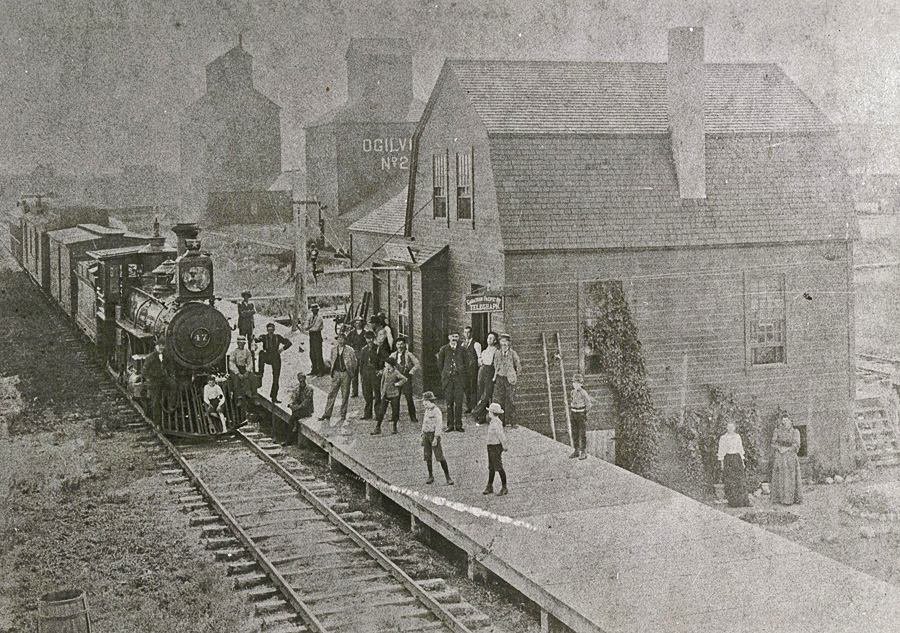
|
Melita’s first CPR Station More buildings were built quickly from materials readily available via the new rail line. Within a few years they were replaced by more ambitious structures such as the Northern Bank, the I.O.O.F Hall and the Crerar Law Office; all of which are still in use. By 1892 numerous business blocks lined Main and Front Streets. As early as 1892, sidewalks were to be laid on Main Street. By 1898 Melita had a population of over 500 people. 1905 saw street lighting by gasoline lamps. In 1916 permission was granted to R. N. Wyatt to place gasoline tanks at business on Front Street. Garages were replacing Livery Stables. As the town grew, its selection of businesses attracted customers from some distance 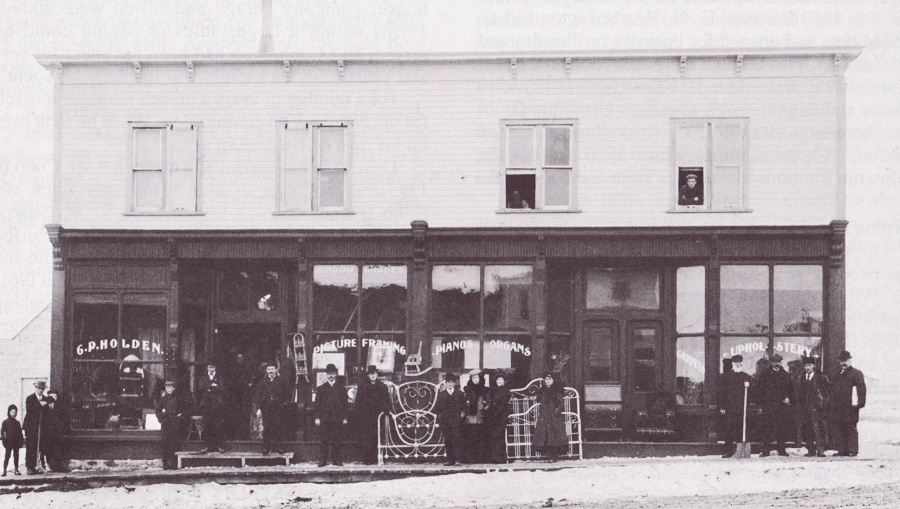 C.P. Holden’s Furniture Store |
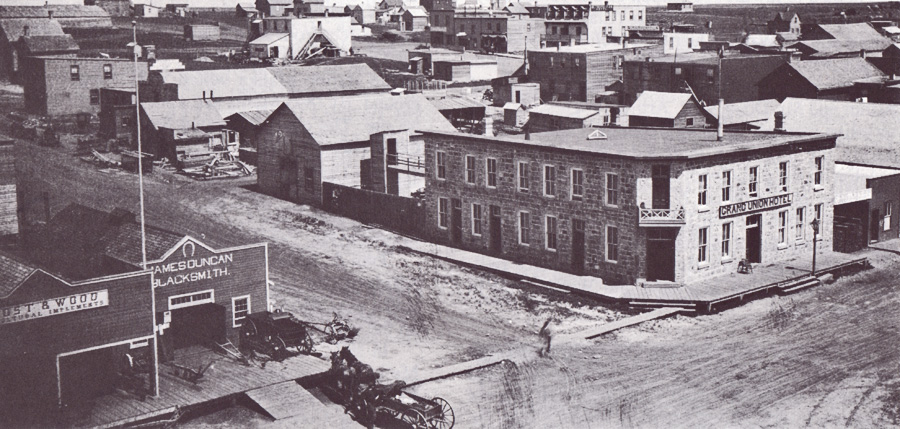
The Grand Union Hotel
Melita Herliage Website
Page 51: Elva
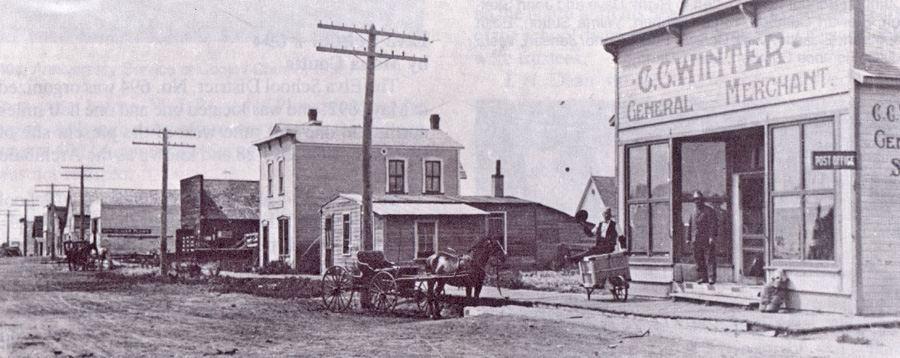
The view down Elva's Railway Avenue in 1940.
| One
of the first homesteaders in what came to be known as the district
of Elva was H. J. Archibald and his family. They settled northwest of
where Elva was later built. Archibald established a post office out of
his home, which received the mail once a week from Brandon. In 1891 James Skelton agreed to sell some of his land to the Canadian Pacific Railway, which was looking to continue the line west from Melita. An unincorporated village grew on a corner of Skelton’s land. The community was later named after the first baby to be born in the district: Elva, the daughter of James Modeland and his wife. Elva continued to grow, and by 1904 it had a population of 100 people. Four years later the numbers had grown to 150 people. Elva seemed to be on the road to becoming a very important town—its elevators serviced farmers as far south as the United States boundary. |
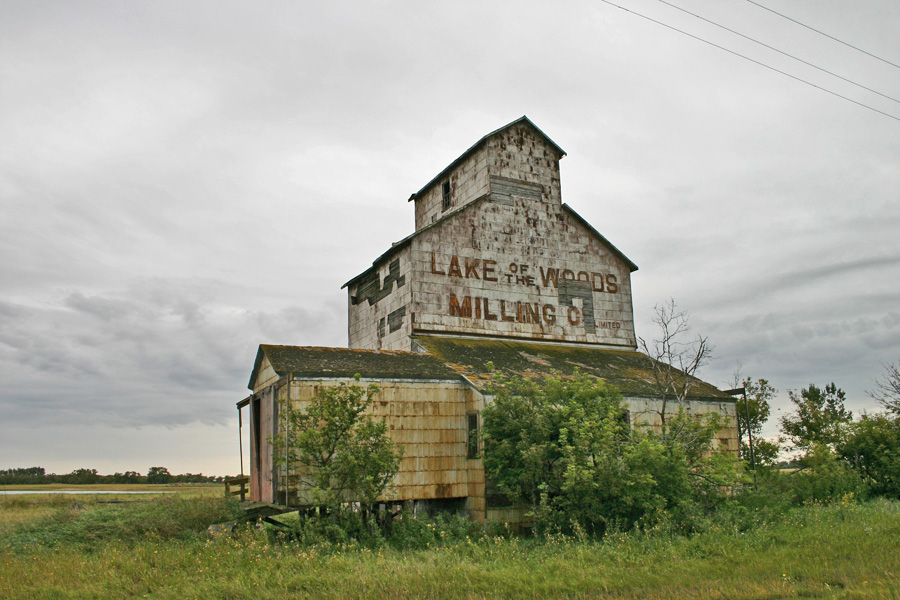
This elevator in Elva (the
oldest still standing in Canada untill it was torn down in 2022)
was built over a century
ago.
The Lake of the Woods elevator was built sometime between 1892 and 1899. Before the turn of the century, the Lake of the Woods Milling Co was one of Manitoba’s top companies in the grain industry. Their elevator shared the business with three other elevators, all built near the turn of the century and operated by different companies. 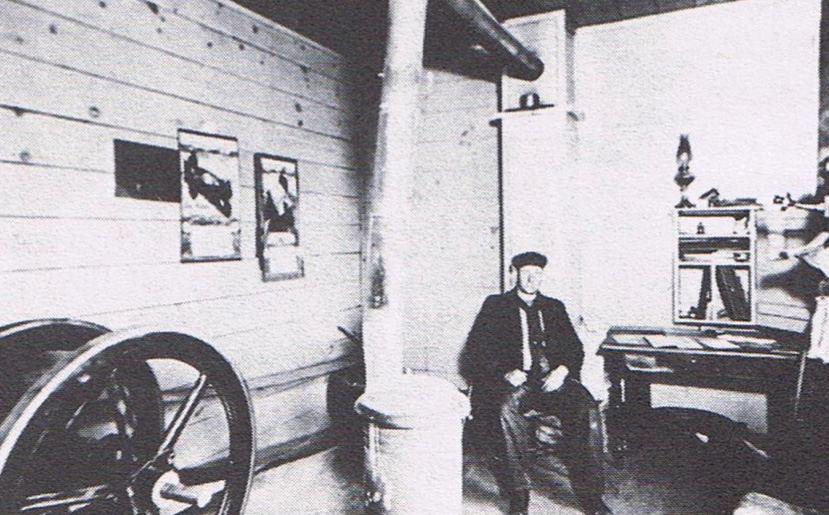 Matt Pedden, Lake of the Woods agent in 1912 |
Elva Photo Collection
Page 52: Pierson
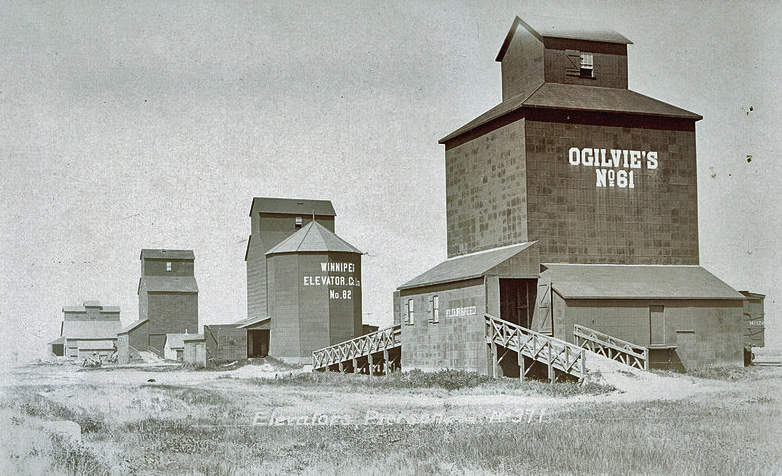
| The CPR laid tracks through what would be
the village of Pierson in
1891 and surveyed a town site. Merchants Alfred Gould and David Elliot
from Sourisford were the first to buy lots. They established Pierson’s
first business, a grocery store Pierson quickly became the service centre for the southwest corner. February of 1892 saw the first train rumble down the tracks. In short order, three grain elevators were built beside the tracks by different companies. In 1900 this number had risen to four. The usual assortment of services followed in a building boom that provided the shops and businesses necessary to make the community flourish: a blacksmith shop, millinery shop, wheelwright, livery barn, butcher shop, lumberyard, drug store, jewellery store, bank, barbershop, and café, among others. Around 1900, the businessmen of Pierson, especially J. F. Dandy, saw a need for more accommodations for the travelling public. Dandy owned the first hardware, furniture and lumber businesses. In 1900 Dandy financed the building of the Leland Hotel, which catered to travelling businessmen, doctors, dentists and incoming settlers. 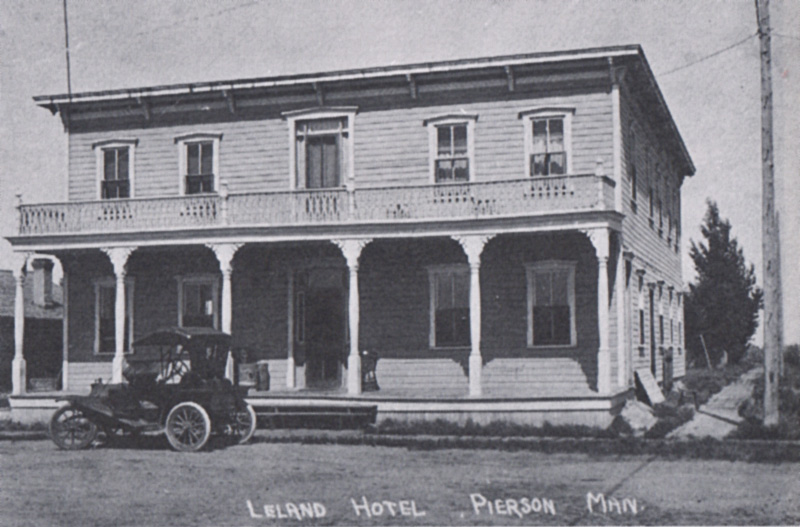 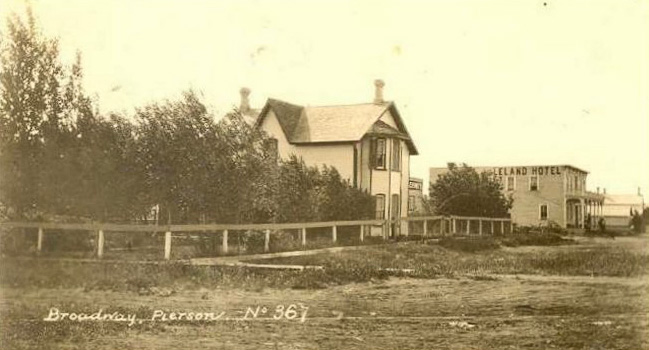 In the fall of 1891 Sherriff's and Company built a large warehouse, with the lower part housing machinery, sleighs, cream separators, parts and feed and the upper part was used as a hall. Today it is a private home. |
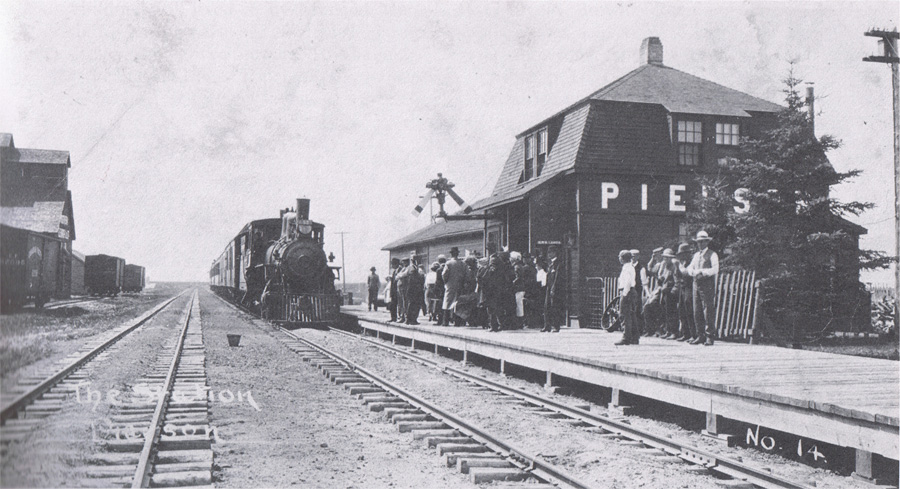
The Pierson train station in 1915.
Pierson Photo Collection
Related Resources
| Home |
Contents | Downloads | Resources |